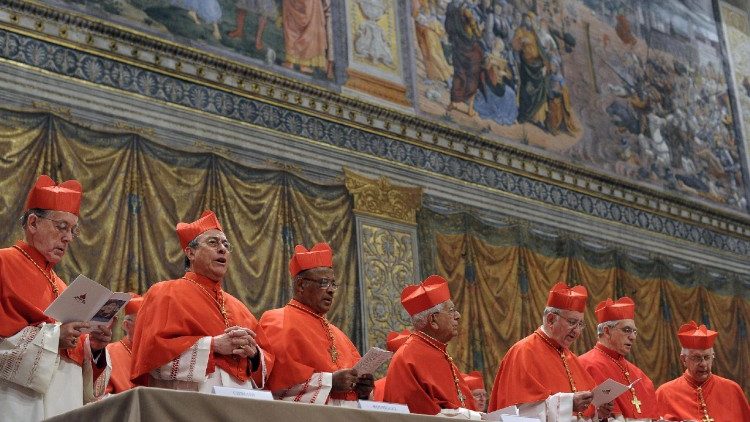The College of Cardinals is taking on an increasingly global face as it prepares to enter the Conclave on May 7 to elect a new Pope. With 135 eligible Cardinal electors hailing from 71 countries across five continents, this will be one of the most internationally diverse Conclaves in the Church’s history, although only 133 are expected to participate due to health-related absences.
Of the 135 eligible voters, more than three-quarters (108) were appointed by Pope Francis during his 12-year pontificate. Former popes Benedict XVI and St. John Paul II appointed 22 and 5 electors, respectively. The longest-serving among them include Cardinals Philippe Barbarin (France), Josip Bozanić (Croatia), Vinko Puljić (Bosnia and Herzegovina), and Peter Turkson (Ghana).
Pope Francis’ appointments have transformed the College into a less Eurocentric and more globally representative body, reflecting his long-standing commitment to elevating voices from the “peripheries” of the Catholic world. For the first time in history, 12 countries will have native Cardinals participating in a Conclave. These include nations like Haiti, Cape Verde, South Sudan, and Mongolia—signaling a shift in the geographical center of gravity of the Church.
The first-time participating Cardinals include:
Chibly Langlois (Haiti)
Arlindo Furtado Gomes (Cape Verde)
Dieudonné Nzapalainga (Central African Republic)
John Ribat (Papua New Guinea)
Sebastian Francis (Malaysia)
Anders Arborelius (Sweden)
Jean-Claude Hollerich (Luxembourg)
Virgilio do Carmo da Silva (Timor Leste)
William Seng Chye Goh (Singapore)
Adalberto Martínez Flores (Paraguay)
Stephen Ameyu Martin Mulla (South Sudan)
Ladislav Nemet (Serbia)
Europe still retains significant representation with 53 Cardinal electors, including 19 from Italy, 6 from France, and 5 from Spain. However, the rest of the world now surpasses Europe collectively. The Americas follow with 37 electors (16 from North America, 4 from Central America, and 17 from South America), 23 from Asia, 18 from Africa, and 4 from Oceania.
This internationalization suggests the possibility of a pontiff from beyond Europe, although regional origin is just one of several factors influencing the election.
Cardinal electors span several age groups. The youngest is Mikola Bychok, a 45-year-old Australian-born prelate of Ukrainian descent. The oldest is Carlos Osoro Sierra of Spain, aged 79.
Six electors were born in the 1970s, including:
Baldassarre Reina (Italy)
Frank Leo (Canada)
Rolandas Makrickas (Lithuania)
George Jacob Koovakad (India)
Américo Manuel Alves Aguiar (Portugal)
Giorgio Marengo (Italy/Mongolia)
Most electors, however, were born in the 1940s (50 cardinals), followed by those from the 1950s (47) and 1960s (31). The most common birth year is 1947, with 13 electors.
A total of 33 Cardinal electors belong to 18 different religious orders, reinforcing the Church’s spiritual and cultural diversity. The Salesians of Don Bosco lead with five Cardinals, followed by the Franciscans and Jesuits, each with four.
Other represented orders include Dominicans, Redemptorists, Divine Word Missionaries, and the Consolata Missionaries. Each brings a distinct pastoral and theological tradition to the decision-making body.
Despite 135 Cardinals being eligible to vote, two will not attend the Conclave due to health issues, reducing the voting number to 133.
As the world watches the upcoming Conclave, the expanded representation from across the globe underscores the Church’s evolving identity. While doctrine, pastoral focus, and personal charisma will play pivotal roles in the election of the next Pope, the growing influence of non-European Cardinals marks a defining shift in the Catholic Church’s global footprint.




